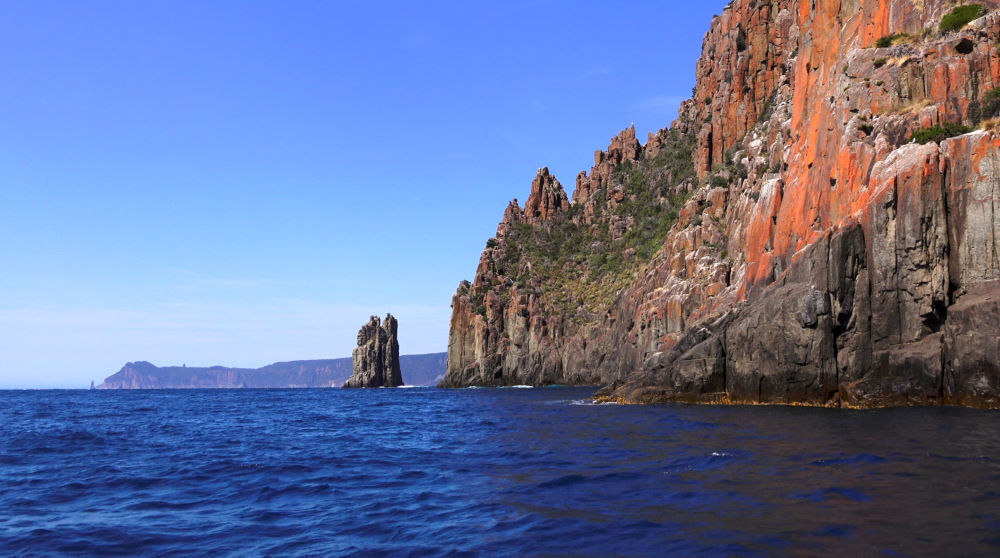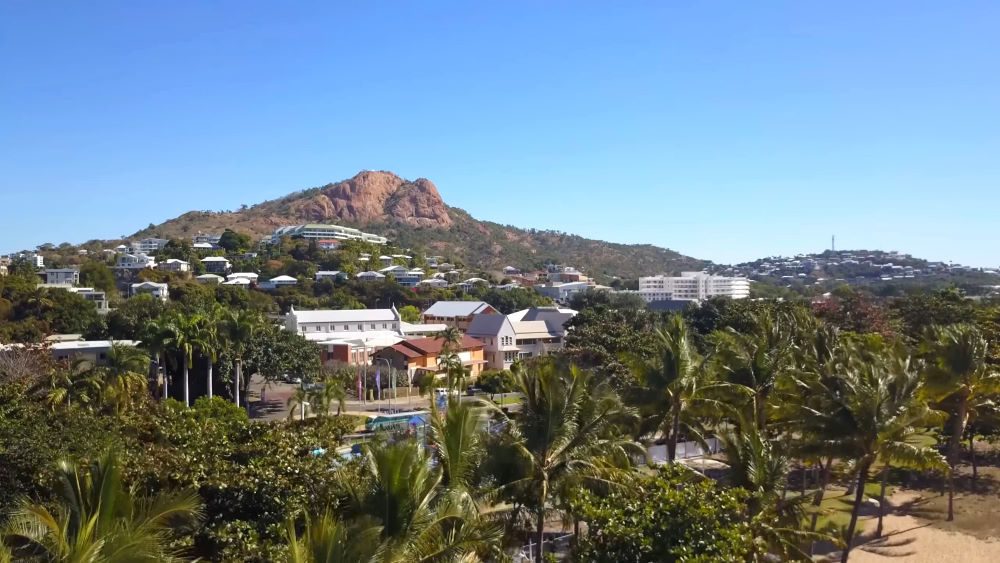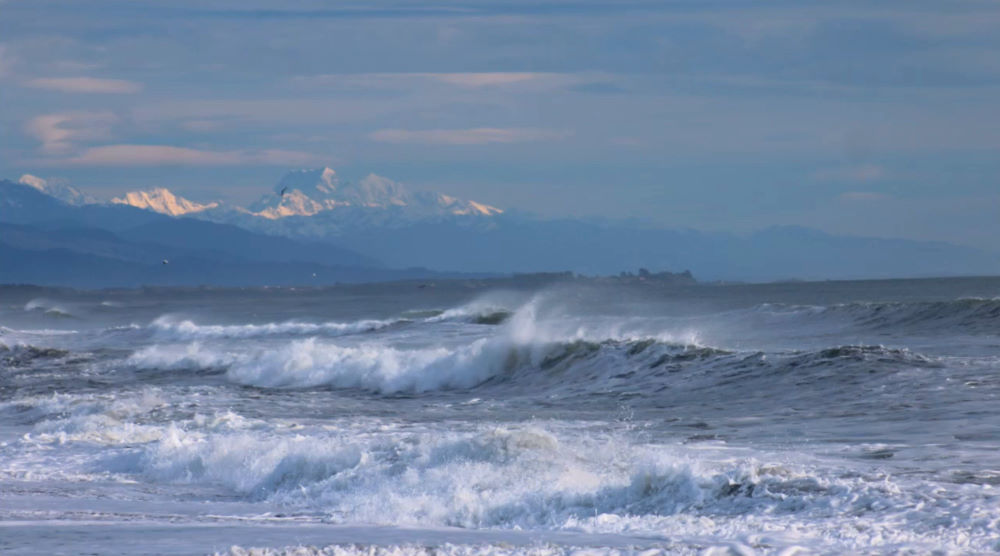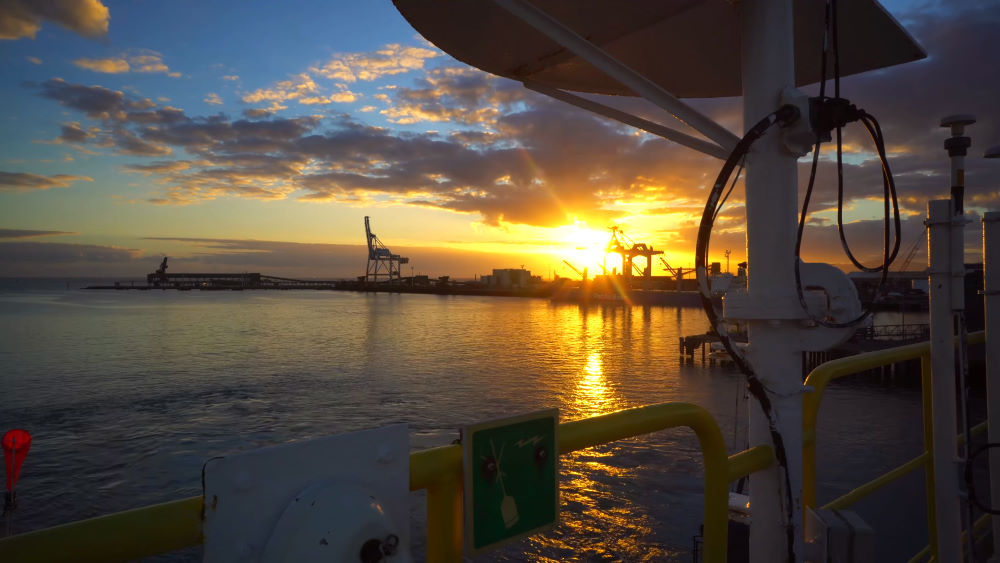Тасманово море разделяет Австралию и Новую Зеландию, принадлежит к Тихоокеанскому бассейну. В его акватории есть несколько островов, самым большим из них является Тасмания, названная в честь исследователя Абеля Тасмана.
Географическое положение Тасманова моря
Тасманово море относится к межостровным, на карте по очертаниям похоже на почти правильный ромб.
Уникальность заключается в том, что Тасманово море находится одновременно в 3 климатических поясах:
- субтропическом;
- тропическом;
- умеренном.
Погода на разных участках может не совпадать. Площадь Тасманова моря составляет 2 300 000 км², глубина достигает 6000 м, поскольку на дне находится Восточно-Австралийская котловина. Рельеф дна сложный, преобладают впадины, есть несколько горных хребтов. Приливы высокие, иногда достигают 5 м, соленость 35%. Тасманово море самое южное в Тихоокеанском бассейне, если исключить антарктические воды.
Самой опасной зоной для мореплавателей считается пояс западных ветров, известный как «ревущие сороковые». Он расположен между 40 и 50 широтами.
Тасманово море на карте Австралии следует искать у южной оконечности материка около штата Новый Южный Уэльс. Другим краем оно достигает западного берега Новой Зеландии. Севернее Тасманова моря находится Коралловое, омывающее берега Новой Гвинеи. Разделяют моря коралловые рифы. Северной точкой условной границы считается остров Норфолк.
Тасманово море на карте
Официальной датой пересечения моря европейскими мореплавателями считается 1642 год. Голландский мореплаватель А. Тасман открыл самый крупный остров архипелага, а Джеймс Кук в своем первом плавании не только пересек море, но и довольно подробно описал его положение, некоторых представителей флоры и фауны, островные племена и климат.
Острова Тасманова моря составляют несколько изолированных групп:
- Болс-Пирамид;
- Лорд-Хау;
- Норфолк.
Все они территориально принадлежат Австралии.
Острова и утесы Тасманова моря

Самый большой и известный остров, Тасмания, находится в 240 км от австралийского материка, население составляет 500 тысяч. 5 основных достопримечательностей острова включены в списки ЮНЕСКО, но главным достоянием является его уникальная природа и животные-эндемики, не встречающиеся больше нигде в мире.
Норфолк второй по величине остров, знаменит своей независимостью, имеет герб, флаг, организовано самоуправление. На острове находится живописные игровые поля Норфолкского гольф-клуба. Печально известный Кровавый мост был свидетелем страшного бунта каторжников, по одной из версий замуровавших тело начальника охраны в одну из опор. Жители острова уверяют туристов в существовании легиона привидений и организуют особые экскурсии по самым таинственным местам, сопровождая путешествия леденящими душу историями.

Остров Кенгуру третий по площади, на нем расположены национальные заповедники и парки. Он привлекает туристов интересными экологическими маршрутами, активными видами спорта, серфингом и рыбалкой.
На территорию острова строго запрещено провозить животных и огнестрельное оружие.
Болс-Пирамид необитаем, находится в 20 км от Лорд-Хау. По форме напоминает парус, известен как самый высокий вулканический утес в мире. Его высота достигает 562 метра. По сути, утес является верхушкой огромного затопленного плато. Он возник из напластований кипящей лавы, постепенно застывающей причудливыми слоями.
Климатические особенности Тасманова моря

По мере продвижения с севера на юг тропики сменяются субтропическим поясом, плавно переходящим в умеренный. Вслед за сменой климатических поясов происходят метаморфозы с растительным миром и морскими обитателями. Разницу в температуре поверхностных вод слегка сглаживает Восточно-Австралийское течение, но даже оно не в состоянии выровнять ее, когда на юге +27, а в северной части +15. В зимний период в умеренном климатическом поясе встречаются остатки айсбергов, доплывших по течению от Антарктиды.
Флора и фауна Тасманова моря
 Особенностью Тасманова моря является большое количество редких обитателей, многие виды занесены в Красную книгу и признаны исчезающими. В северной и южной частях разный перечень представителей флоры и фауны.
Особенностью Тасманова моря является большое количество редких обитателей, многие виды занесены в Красную книгу и признаны исчезающими. В северной и южной частях разный перечень представителей флоры и фауны.
Северная часть
Теплые ласковые воды, высокая степень прогрева без длительного падения температуры привлекло тропических обитателей.
Здесь водятся:
- киты;
- кашалоты;
- касатки;
- летучие рыбы;
- акулы;
- зоопланктон;
- парусники;
- меч-рыба.
Часто встречается белая, тигровая, молотоголовая, синяя, рифовая акула. Туристам предлагают экстремальное развлечение, заключающееся в погружении в дайверской клетке и наблюдении за безжалостными хищниками в их естественной среде.
Также популярны морские прогулки, включающие наблюдение за китами и летучими рыбами, способными за счет сдвоенных плавников высоко выпрыгивать из воды и пролетать по воздуху значительные расстояния.
Южная часть
Климат здесь гораздо холоднее, зимой столбик термометра фиксирует +5-8 градусов, иногда приплывают фрагменты айсбергов и подводный мир совсем иной.
Дно покрывают заросли водорослей, преобладают промысловые виды рыб:
- камбала;
- тунец;
- ставрида;
- скумбрия.
Интересные факты о Тасмановом море

- Оно самое южное.
- В северной и южной частях моря абсолютно разные представители флоры и фауны.
- Географически водный бассейн соединяет Новую Зеландию и Австралию.
- По форме очертания похожи на ромб.
- Море находится одновременно в 3 климатических зонах.
- Разница температур воды в противоположных частях достигает 10-18 градусов.
- На территории находится самый высокий вулканический утес на планете.
- На островах живет большое количество вымирающих видов, находящихся под всемирной охраной.
- Большая часть достопримечательностей островов Тасманского моря внесена в списки Юнеско.
- Первым путешественником, который смог пересечь море в одиночку стал Колин Куинси, отправившийся в плавание в 1977 году.
На островах Тасманова моря расположены заповедные зоны, где живут тасманский дьявол, валлаби и еще множество животных и птиц, которые не сумели прижиться в других частях света. Удивительное море, где в одной части водятся тропические рыбы, а по другому краю плывут льдины уникально и хранит еще множество секретов, которые только предстоит раскрыть.
